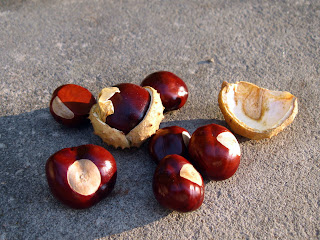You can tell this bumble bee is sleeping because he is on the leaf, not the flower (and on the underside, at that).
Bumble bees are one of the few insects you could see being made as a stuffed animal. They are cute and furry, and normally mind their own business, collecting pollen and nectar.
A few weeks ago, however, I was accosted by one. On my way down the hill, I paused to pull some weeds from the rock 'garden' (more of a weed garden, really). A bumble bee landed on my garden glove. I shooed it away, but it repeatedly landed on me. Finally, I realized it was trying to sting me, but the stinger couldn't reach my skin through the loose clothing. I decided to take refuge in the house (before it figured out where my head was), where I did a little research into what I thought was bizarre behavior.
Bumble bees make nests in the ground and commonly take over abandoned chipmunk holes - which are abundant in the rock garden. I must have inadvertently threatened the nest. In addition to physically threatening them, this is the only other time they will try to sting. Unlike honey bees, they are able to sting repeatedly.
Looks like I have a good excuse for having a weedy rock garden.











